Discovering Down
Discovering Down
There is such a kind of material, she is light, soft, and warm.
There is such a kind of material, she has a unique globular structure, it looks like blossoming dandelions.
There is such a kind of material, she contains full of air, absorbs and releases moisture, being able to breathe by herself.
She is Down, the unique, green and natural gift.
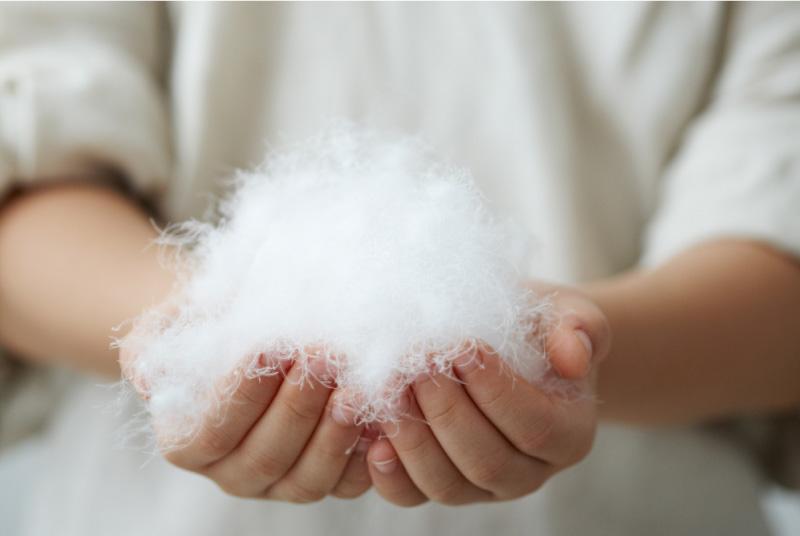
Down is the future
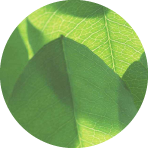


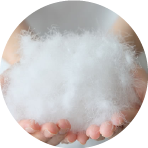
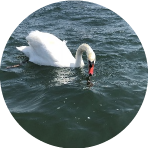
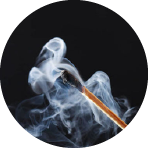
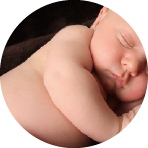
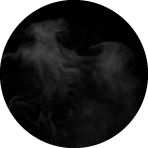


Waterfowl Plumage

Waterfowls
Waterfowls are the birds that living on the water surface such as domestic ducks, domestic geese, wild ducks, swan, and graylags. Waterfowls usually have long flat chests and well-developed oil glands in their tails. They are good at swimming by using their webbed feet. Waterfowls can float on the water surface because of their feathers and down contain grease composition, which can protect them from getting wet. Waterfowl down and feathers usually have high resilience performance and excellent fill power.
Where does down come from
Down & feathers are the by-products of Waterfowl Meat Food Industry, they are from common waterfowl species such as goose & duck.
History of Goose
SCIENTIFIC AMERICAN (USA) reported: About 220 million years ago, ancestor of goose was the companion of dinosaur, scientists discovered a goose fossil from 70 million years ago.
Plumage of a goose consists of approximately 120 grams of feathers & down
Section ① has approximately 60 grams of small feathers & down.
Secton ② has approximately 150 grams of medium feathers & down.
Section ③ has approximately 90 grams of valueless wing & tail feathers.
HISTORY OF DUCK
Zoology of China (China) Vol.2 conclude: the common domestic ducks were domesticated from mallard ducks and spot-billed ducks.
Plumage of a goose consists of approximately 300 grams of feathers & down
Section ① has approximately 50 grams of small feathers & down.
Secton ② has approximately 40 grams of medium feathers & down.
Section ③ has approximately 30 grams of valueless wing & tail feathers.
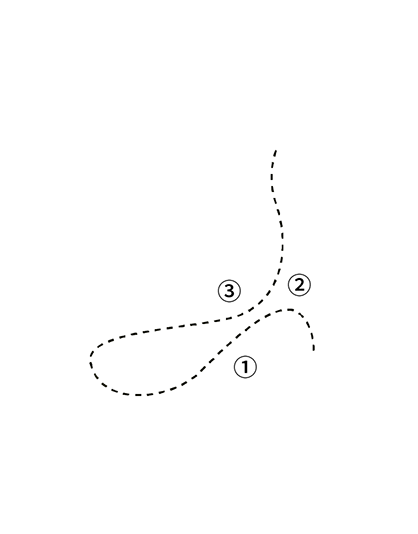
Descriptions of all parts of “WATERFOWL PLUMAGE”
- Down Cluster: Down in a cluster shape with down fibers emanating from the down core.
- Nestling Down: Immature down in an umbrella shape.
- Judgment Reference: 1. Obvious quill shafts, inconspicuous short quill. 2. Three-dimensional shape, barbs are down fibers.
- Plumule Down: Down in a feather shape, fluffy filament barbs grow on soft quill shafts.
- Damaged Down: Down having two or few more fibers emanating from the down core.
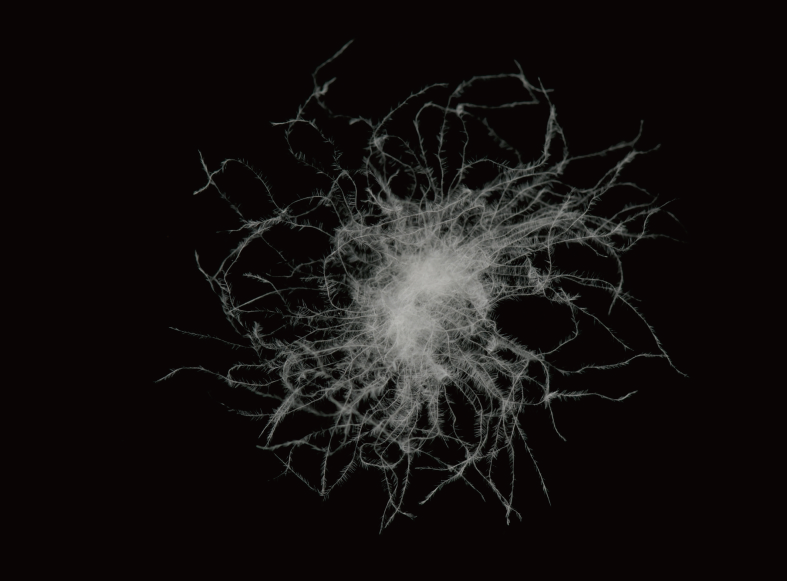
- A single fiber detached from down or the feather quill point.
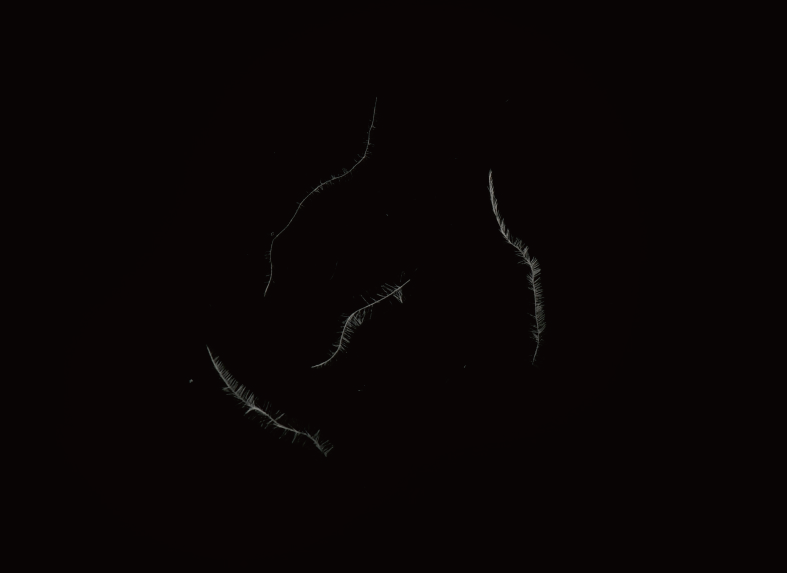
- Feathers grow on the waterfowl scarfskin. The feather quill shaft can be folded without breaking.
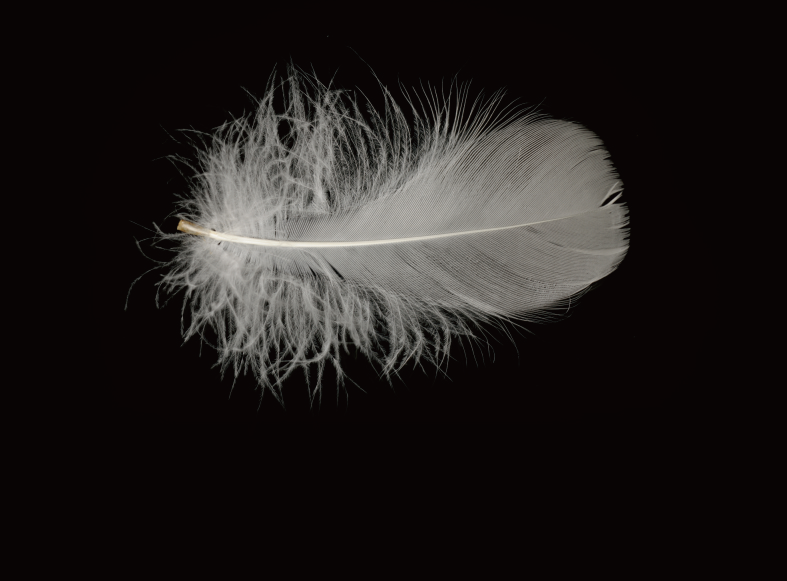
- Long Goose Feather: Goose feather that is longer than 8cm.
- Long Duck Feather: Duck feather that is longer than 7cm.
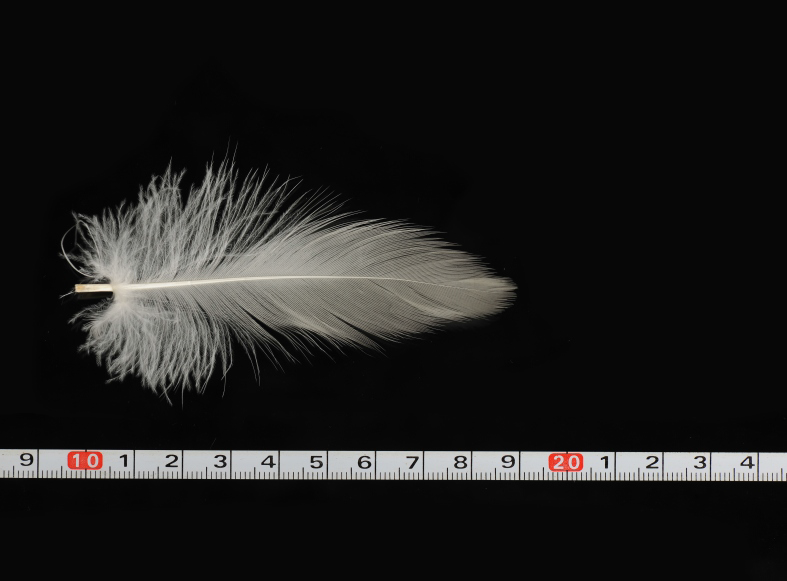
- A single feather barb detached from the vane.
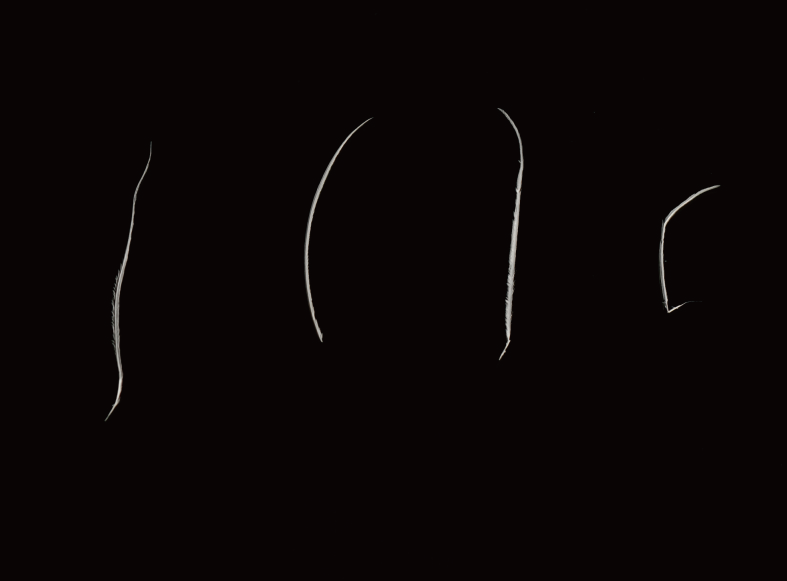
- Colored Feather: waterfowl feathers that has colors other than white color (including deep yellow color), which are still considered in feather volume.
- Colored Down: Waterfowl down that has colors other than white color (including deep yellow color), which is still counted in down volume.
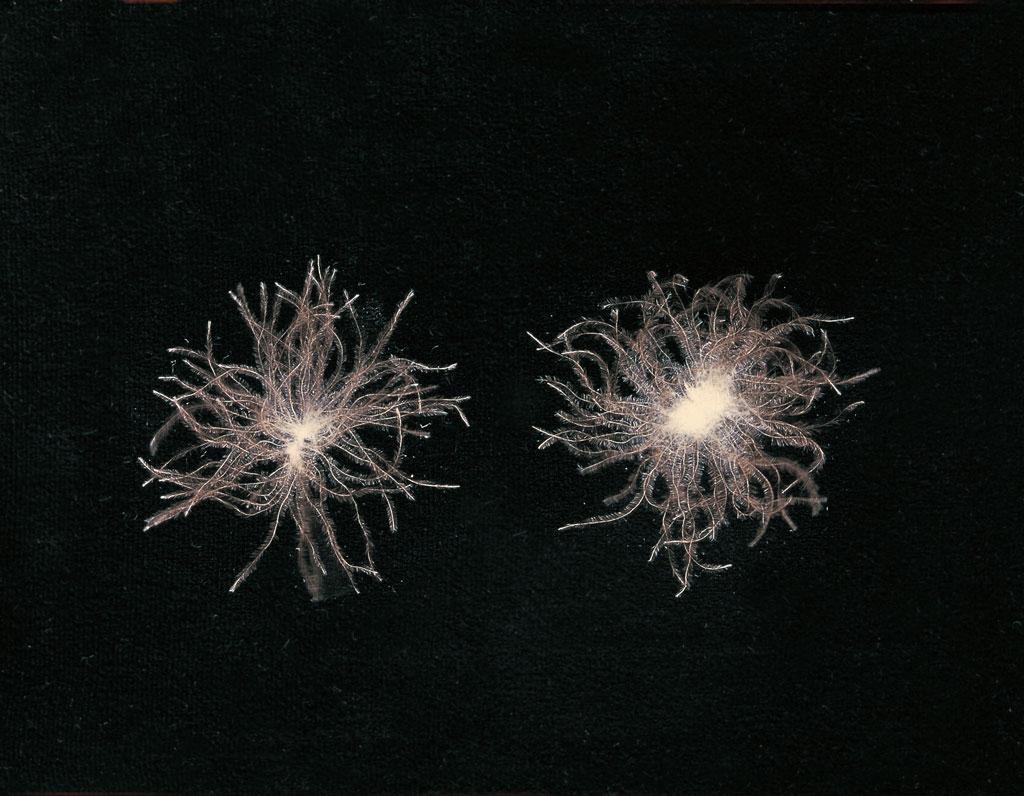
- These feathers have been moth-eaten, mildewed or mechanically damaged during washing process, including the broken feather and the feather that has been damaged more than 1/3.
- Judgment Reference:1. Feather with 1/3 damaged area or more. 2. Bald feather quill. 3. Feather quill that has been broken off in the middle. 4. Part of feather surface detached from the feather.
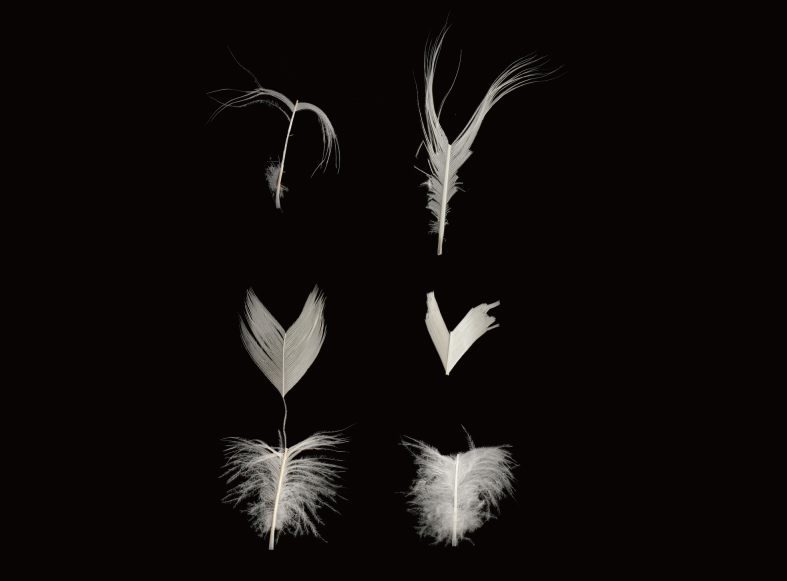
- Chicken Feather: Looks bright and shiny.Feather fibers are thicker compares to duckeather. Long pointy shape of favion.There is one attached feather on the bottom of the quill, which can be easily distinguished from goose or duck feather. But some of the chicken feathers don’t have attached feathers. Therefore, the attached feather is not the only way to judge if it is a chicken feather. Some other chicken feathers have the shape of a tree branch with yellowish color, and it shows a specific shape of bamboo nodes under the electron microscope.
- Pigeon Feather: feathers plucked from pigeons, with bright and shiny color, which is hard to distinguish it from chicken or other land fowl feathers. Normally needs to identify it under a microscope.
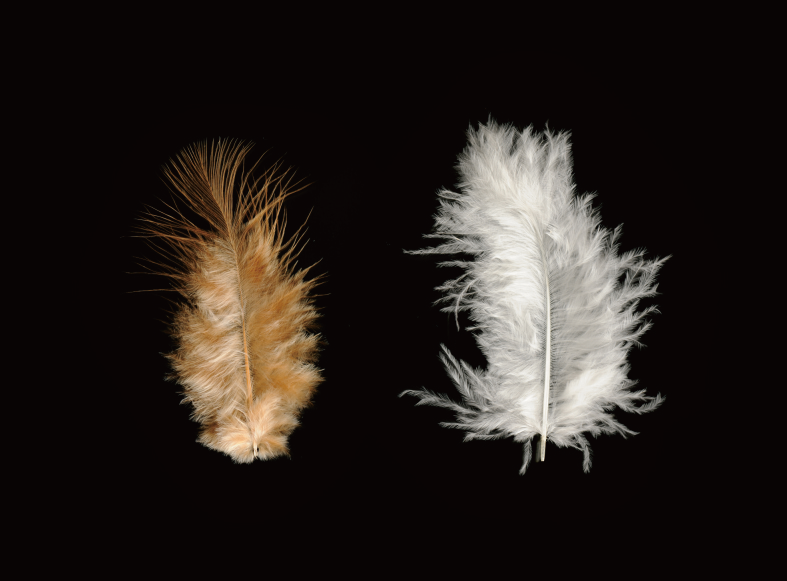
- Dust, ash, scurf, small vein and other elements that mixed inside the feather and down.
- Judgment Reference: 1. Grass, wood, bamboo chip, fiber, wire, plastic, sand, and other foreign objects. 2. Small veins detached from the shaft. 3. Broken shafts. 4. Wax covering separated from the bottom of immature feather. 5. Fragmented fibers, epidermis, shafts. 6. Left marrow from broken or detached shafts.
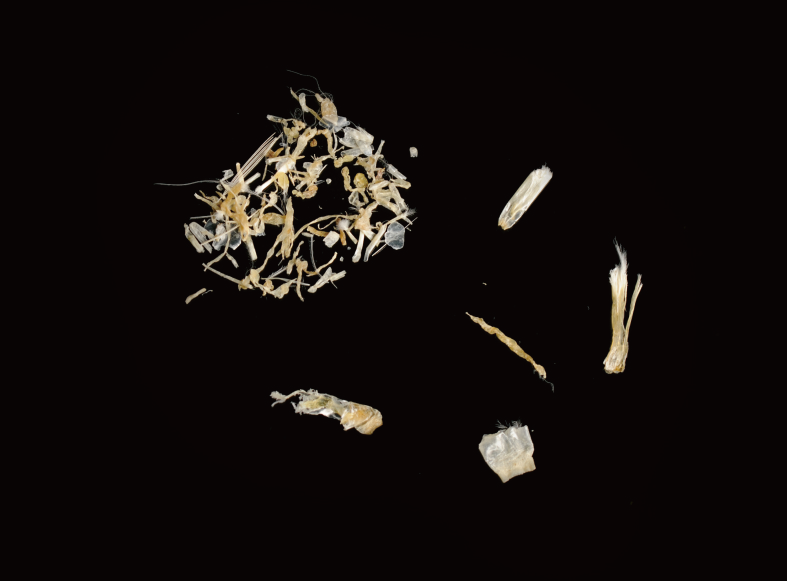
COMMON MEASUREMENTS OF DOWN QUALITY

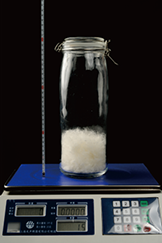
DOWN CLUSTER 30%
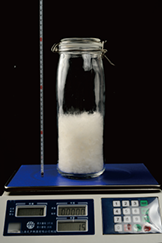
DOWN CLUSTER 50%
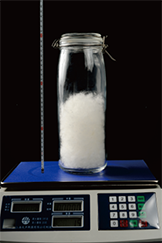
DOWN CLUSTER 75%
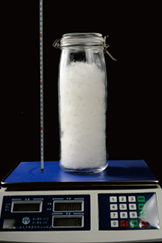
DOWN CLUSTER 90%
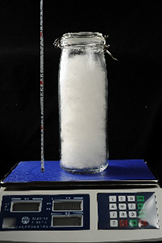
DOWN CLUSTER 95%
“Fill Power” is a critical indicator which reflects the insulation ability of feather & down products, which is also a measurement of the space occupied by a designated material. The higher fill power means it keeps more air volume, namely the better insulation ability. The international unit of fill power measurement is in³/30g, it says under certain conditions, the exact cubic inch of 30 grams of down occupied. Down content is closely related to fill power.
Professional explanation by Huaxiong, Wang
Fill Power is an indicator of measuring the quality of down washing, drying, and storing. Meanwhile, it’s also a key factor of insulation ability. Fill power is not a fixed indicator after years of observations and experiments. Longtime storage, pressure or freezing could reduce the fill power, but it could be recovered to some extent after proper treatments.
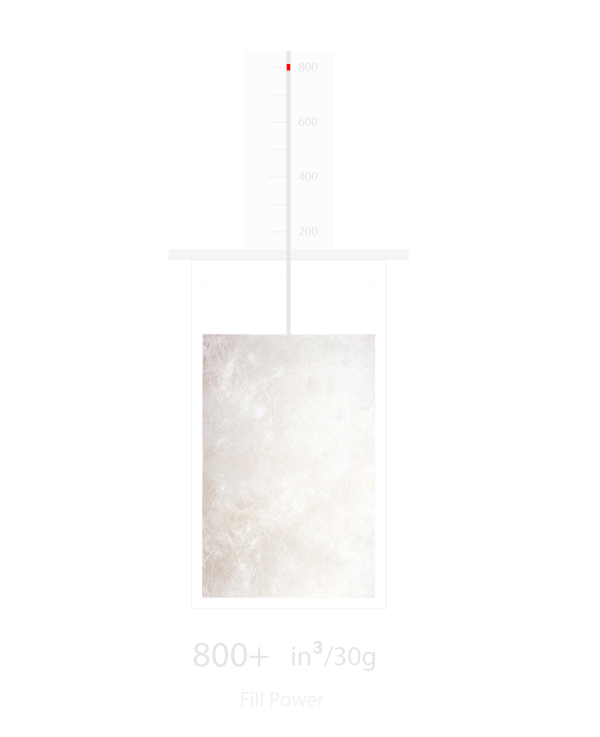
Turbidity is a key indicator which represents the cleanliness of feather & down materials. Typically, the turbidity is measured by observing the solution sample after down wash. The total quantity of insoluble particulates remained in the solution sample after down wash determines the result of turbidity, whether the particles are organic or inorganic.
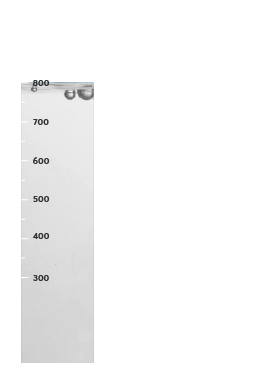
Oxygen No. represents the volume of reducing substances remained in feather & down material. This indicator is measured by the amount of oxygen that has been consumed by the reducing substance when oxidized under certain conditions. The unit of Oxygen No. is mg (oxygen)/ 100g (down).
Down’s chemical property is quite stable; it is hard to be oxygenated. The reducing substances inside has active chemical property, whether they are organic or inorganic. In some cases, such as humid environment, reducing substances will help microorganism increase and damage the feather & down quality. Reducing substances could be largely decreased after the proper washing process. Therefore, the Oxygen No. is a critical indicator in the down quality evaluation.
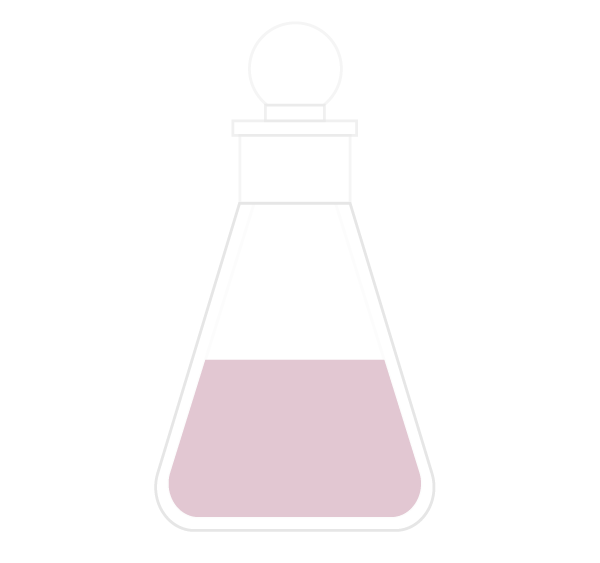
|
|
Waterfowl plumages are covered by fat and oil. The fat and oil can be removed during the washing process. Therefore, the fat & oil rate is another important indicator of down quality after wash.
Method of measurement: The Soxhlet method is generally applied in all kinds of feather & down test methods standards. The technique is dissolving the fat from the plumages in some organic solvent (e.g., ether or diethyl ether). After the solvent has vaporized, weight the fat left inside, then calculate the fat & oil rate.

